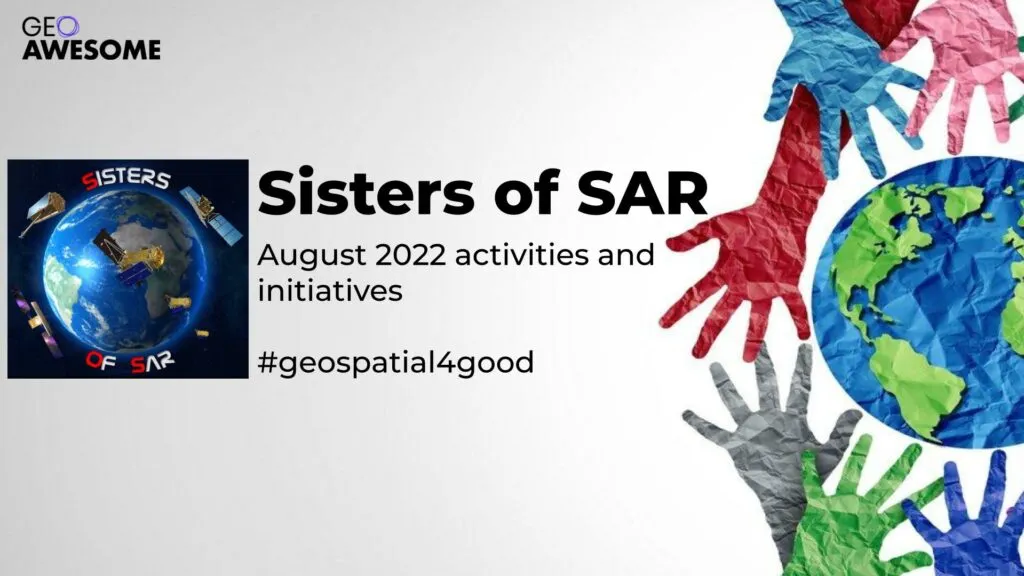
Top satellite-based observations of summer 2022
Top satellite-based observations of July and August 2022
Below you’ll find a summary of the most interesting satellite-based observations collected this summer with the use of Copernicus Sentinel-2 satellites. We focus mostly on events resulting from the effects of global climate change and also a couple of military-related events. The ongoing droughts all over the world are stretching water supplies thinner and thinner. While in other parts heavy rainstorms are causing devastating flooding at a scale that can be observed in openly available lower-resolution satellite imagery.
Season of heat
July is globally considered the month of heat. Scorching temperatures have been fueling wildfires in several countries, especially in Europe. Below you can see a fire near Ladrillar in Spain, where officials have quickly issued evacuation orders. Moving to the West, the Oak Fire in North America – up to now, the largest fire in California this year. Later on this summer, we could observe a fire that broke out in the Grunewald forest in Berlin, following an explosion at a munitions storage site and the Garceau Fire on the west of Polson in Montana US.

Great wildfire near Ladrillar in Spain – view on the map.

Oak Fire – the largest fire in California so far this year- view on the map.

Satellite image of the fire in the Grunewald forest in Berlin – view on the map.

Garceau Fire near Polson in Montana US – view on the map.
Extreme droughts and flooding
Many believe that extreme droughts are another consequence of climate change, just like heavy but short rainfalls which are the cause of many floods right now. Countries struggling with this problem include Yemen, Russia, Thailand, Iran, Nigeria, and Sudan. Flooding has affected thousands of people in Sudan since the start of the current rainy season with at least 13 fatalities. Below we can see the satellite image of Guli in White Nile state, right before the flooding that struck on July 10th, damaging 65 homes. Another frequently talked about flooding happened in Pakistan this year, and is clearly visible even from the orbit.

Sentinel-2 image of Guli right before the flooding that struck on 10 July – view on the map.

Floods in Pakistan visible in Hamal Lake area – view on the map.
It should be no surprise that the post-spring droughts all over the world have significantly reduced water levels. A great example of this may be Lake Mead – a reservoir in the United States, that is slowly, but surely shrinking. A similar situation can be observed at Lake Urmia in Iran. Satellite images show the slow process of drying of the body water, which was once the sixth largest saltwater lake on the planet. This summer as China was suffering from the drought, Yangtze River was running dry and still is because of the general shortage of water in recent years.

Here are the changes in Lake Mead observed over the last year – view on the map.

Yangtze River is running dry as China is struggling with droughts – view on the map.
Open-source intelligence
Satellite imagery enables us to follow situations and events happening worldwide. Observations below include results of intense fighting in Sloviansk, near Izium and Energodar in Zaporizhia oblast in Ukraine, where military activity is especially dangerous, because of its close proximity to the Zaporizhia Nuclear Power Plant. Moving to more static objects, at Jiangnan Shipyard in Shanghai, we can spot Fujian – a Chinese aircraft carrier. Type 003 aircraft carrier is the first one to feature a catapult aircraft launch system.

Fires are visible in the north of Sloviansk. Intense fighting continues – view on the map.

Sentinel2 image of the third Chinese aircraft carrier – Fujian – view on the map.

Visible fire in Energodar in Zaporizhia oblast – view on the map
Did you like the article on satellite-based observations? Read more and subscribe to our monthly newsletter!







